Vivo V20 Pro review
Vivo has been introducing new smartphones in the Indian market on a very frequent basis for the better part of this year. In fact, in the past month or so, the company has added two new devices to its V20 lineup in the form of the V20 (review) and V20 SE (review). Having reviewed both, I will admit, I was quite impressed with the duo, and excited to see what the V20 lineup had in tow next. Enter, the Vivo V20 Pro, a phone that retails for Rs 29,990 and carries all the trademark features of its younger siblings. Furthermore, the handset brings a few enhancements of its own such as 5G capabilities and dual selfie shooters. It also misses out on a couple, such as the presence of a higher refresh rate panel, which would’ve made it a more befitting ‘Pro’ device. Regardless, competing smartphones such as OnePlus Nord (review) and Realme X3 SuperZoom (review) are placed squarely in the V20 Pro’s crosshairs. I have already given my initial impressions of the V20 Pro earlier and now it is time to get into the meat of the matter. Here is my full review and analysis of the Vivo V20 Pro to see whether it makes for a suitable competitor in an increasingly crowded upper mid-range market.
Design and display
- Display: 6.44-inch Super AMOLED
- Resolution: FHD+ (2,400 × 1,080)
- Refresh rate: 60Hz
- Protection: Gorilla Glass 5 back and SCHOTT Xensation UP front
- SIM: Dual nano
- Connectivity: USB Type-C
The Vivo V20 Pro’s design is almost identical to the V20, which is to say I’m a fan. What strikes me the most about the V20 Pro is how incredibly light and thin the phone is. In fact, per Vivo, the V20 Pro is the slimmest 5G phone in the segment and I agree with the statement. Measuring in at 7.38mm and weighing a mere 170g, you will undoubtedly be in awe of the phone’s delicate yet premium in-hand feel. The back of the phone features a familiar frosted matte-like finish, which has been carried over from the V20 to the newer model. Vivo calls it the AG Matte Glass design and rest assured, it is quite pleasing to the touch and is easy on the eyes. The phone’s Midnight Jazz colour variant deserves a mention too, as it blends the two subtle shades of grey in a shifting gradient pattern and lends the V20 Pro a stealthy look. Vivo has used Corning Gorilla Glass 5 protection on the back but it is always a good practice to slap on a case. Speaking of which, the company has provided a clear silicone case on the back which doesn’t mask the colour scheme on the device and shields it from scuffs at the same time.
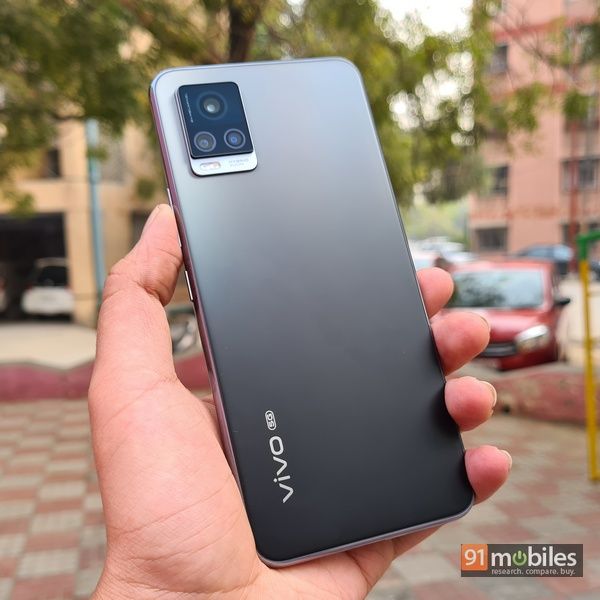
On the back, the triple-camera camera hump protrudes slightly and appears to be exactly the same as the V20. The rectangular housing features the big 64MP primary sensor on top while the assisting ultra-wide and mono sensors sit below horizontally. Vivo has also included the words ‘5G’ alongside its branding on the phone’s bottom half which, honestly, is the only differentiating factor between the V20 Pro and V20’s rear design. The button and port placement are almost identical too, with the exception that the V20 Pro misses out on a headphone jack. However, the company does somewhat make up for it by providing a 3.5mm to Type-C adapter in the box. Looking at it, there are no two ways about it – the V20 Pro is the nicest looking phone in its segment.
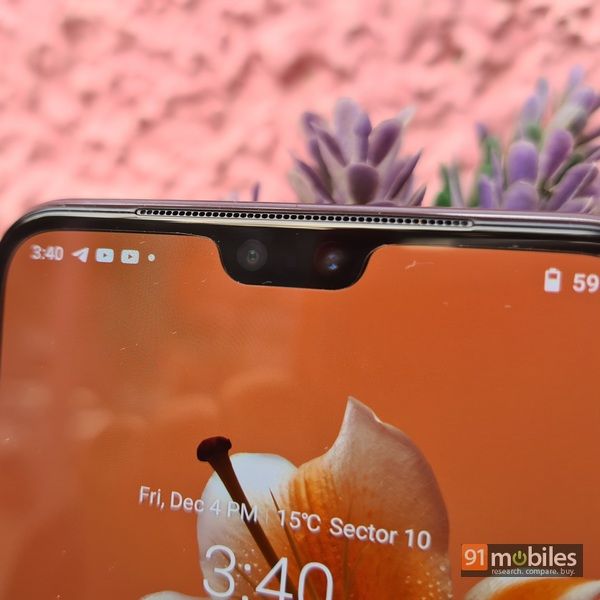
Vivo has been implementing gorgeous displays on its V series phones over the past couple of years and much like the V20 and V20 SE, the Pro version also gets a 6.44-inch, 20:9 AMOLED screen with FHD+ resolution. However, instead of a waterdrop-notch, the V20 Pro implements a bigger iPhone-esque notch that houses the phone’s dual-selfie camera setup. That said, one gripe I have with Vivo is the company’s decision to omit a higher refresh screen on any of its V series phones. Users accustomed to 60Hz screens will feel right at home with the V20 Pro’s panel, and as far as the viewing experience on the phone goes, I had almost no complaints. Excellent viewing angles, pronounced blacks, great contrast ratios, and optimum brightness, is how I would define the V20 Pro’s screen. The V20 Pro also lets buyers customise colour scheme and temperature, and has toggles present for low brightness anti-flicker, dark mode, and eye-care mode. Vivo has not mentioned how bright the screen is, but I have had no problem with legibility whether indoors or in harsh sunlight. Streaming HD content via OTT platforms like Netflix, Hotstar, and Amazon Prime is also a go thanks to WideVineL1 certification. I had enjoyed watching and streaming video content on the Vivo V20 and that experience has been carried over to the Pro moniker as well.
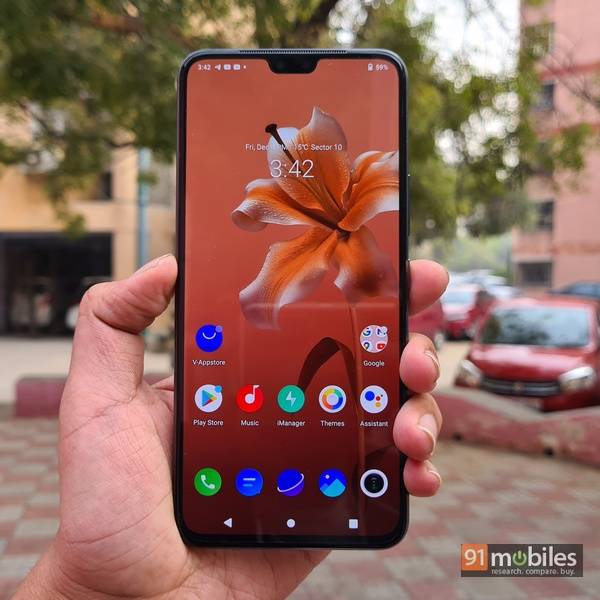
Cameras
- Rear cameras: 64MP main, 8MP wide-angle + macro, and 2MP B&W
- Front cameras: 44MP main and 8MP ultra-wide
- Video shooting: 4K @ 30/60fps, 1080p @ 30/60fps, 720 @ 30/60/120/240fps
There is virtually very little difference between the Vivo V20 and V20 Pro’s camera. Both phones’ primary photo-taking capabilities are handled by the 64MP Samsung ISOCELL GW1 sensor, which is supported by an 8MP ultra-wide and 2MP mono sensor. Vivo’s colour science has been a mixed bag but over the past couple of V series iterations, the image processing has improved dramatically. The earlier pastel-like photos have been replaced by more true-to-life compositions boasting better colours and details in the frame. In daylight, the V20 Pro can churn out excellent shots with HDR and exposure handling managed quite well. More-or-less, all shots are going to be consistent with details but some oversaturation can be expected.
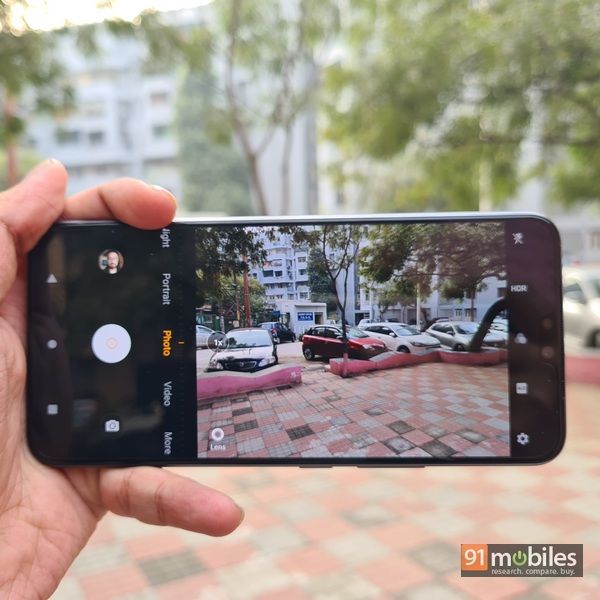
The main difference between the V20 and the V20 Pro is the latter’s Snapdragon 765G SoC that has a better ISP than what you’d get with the former’s 720G chipset. Honestly, I didn’t see much of an improvement other than slightly faster shutter speeds. The ultra-wide lens is quite good at detailing and the 120-degree field of view gets a lot more in the frame. That said, at the edges, you can still see some warping. Some ultra-wide lenses happen to favor warmer or colder colour temperature when compared to what the primary lens shoots. The V20 Pro’s ultra-wide lens matches up with the primary sensor’s colour temperature, giving a more realistic look. The icing on the cake is the ultra-wide sensor’s ability to take macro shots. OEMs such as OnePlus have added an extra lens on the Nord to take macro photos that can be called passable at best. The V20 Pro’s single ultra-wide lens can take sufficiently detailed and colour accurate macro shots provided the lighting is optimum. The mono lens’ functionality begins and ends with taking B&W photos, which is all you are going to get from it.
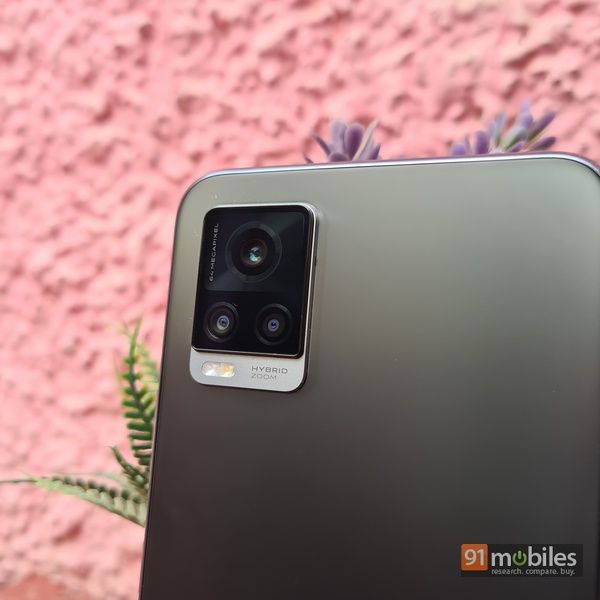
Other features of the camera include Motion Autofocus to keep moving objects in focus and 3D soundtracking to better hear your subject’s voice in a noisy environment. In low light, the V20 Pro’s automatic scene detection adds exposure in the viewfinder and the final shot mostly matches it. That is to say, the dedicated Night mode is only a necessity in pitch black conditions. Noise is mostly kept under control if the subject or scene is illuminated with street lights. When there is very little external light, the Night Mode does a fine job of keeping details and smoothens excess noise. On the video front, you can shoot 4K video @ 60fps along and 720p slow-mo @ 240 fps. Vivo has included the dual view and picture-in-picture mode that can simultaneously shoot a video from the front and back cameras.
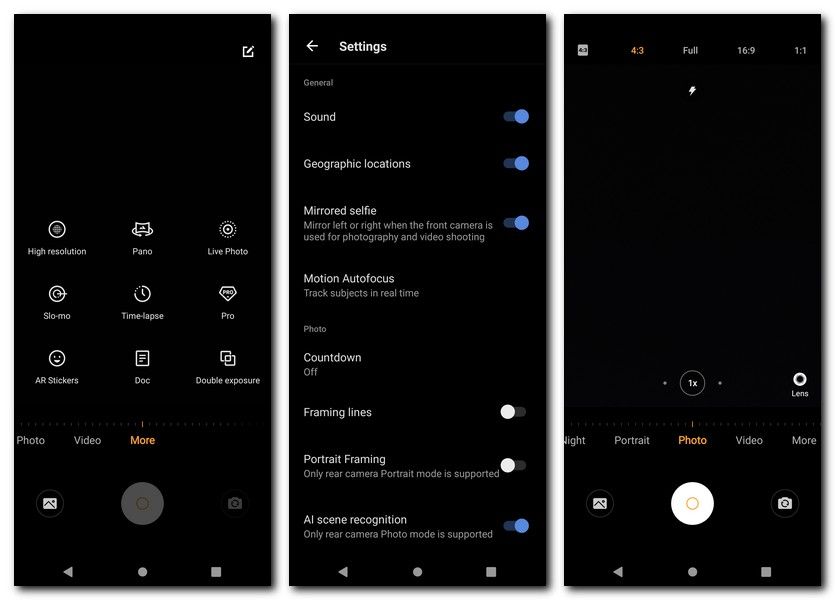
The 44MP selfie shooter that is supported by an 8MP ultra-wide lens with a 105-degree field of view is kind of the trademark selling point for the V20 Pro. Like the V20, you are getting the highest resolution selfie camera in the segment along with a couple of nifty selfie video features. Eye AutoFocus technology has been quite hyped by Vivo as this revolutionary video making tool which tracks your eyes rather than your face to keep you in focus. Marketing gimmick aside, I had mentioned in my V20 review that the focusing is slightly jittery. On the V20 Pro, there is still a very slight lag in focus when the lighting behind my face shifts but it is something that can be improved in future software updates. Regular selfies are quite detailed with realistic skin tones, less oversharpening of facial details, and immaculate background separation in portrait mode. Low light selfies are also much more detailed than I would’ve expected. It isn’t an exaggeration to say that the V20 Pro has one of the best, if not the best, selfie cameras in the segment.
Performance and software
- Chipset: Snapdragon 765G
- RAM: 8GB
- Storage: 128GB, non-expandable
- Software: FunTouch OS with Android 11
The Indian smartphone market is finally seeing a lot of Snapdragon 765G phones with the V20 Pro being the latest and perhaps last addition of this year. While the performance is not on par with say, the Realme X3’s Snapdragon 855+ SoC (a device in the same price segment), the V20 Pro is still an optimum machine for the usual daily mobile computing tasks. Standard tasks like app switching or opening a multitude of Chrome tabs is carried out effortlessly by the V20 Pro. Benchmarks tell a very similar story with the phone getting single-core and multi-core scores of 637 and 1,978 on Geekbench 5. On Antutu I saw an overall score of 322,450 which is actually more than what I had gotten on the OnePlus Nord using the same chipset while having higher 12GB RAM. The single 8GB RAM and 128GB version on the V20 Pro will be quite sufficient for users although it is a bummer not having the option to extend the storage via a microSD card. Heavy-duty gaming such as Call of Duty Mobile can be done, just not at the highest settings and frame rates. Even so, the experience was enjoyable enough for casual gamers such as me. Obviously, less intensive titles such as Subway Surfer will run without any hiccups.
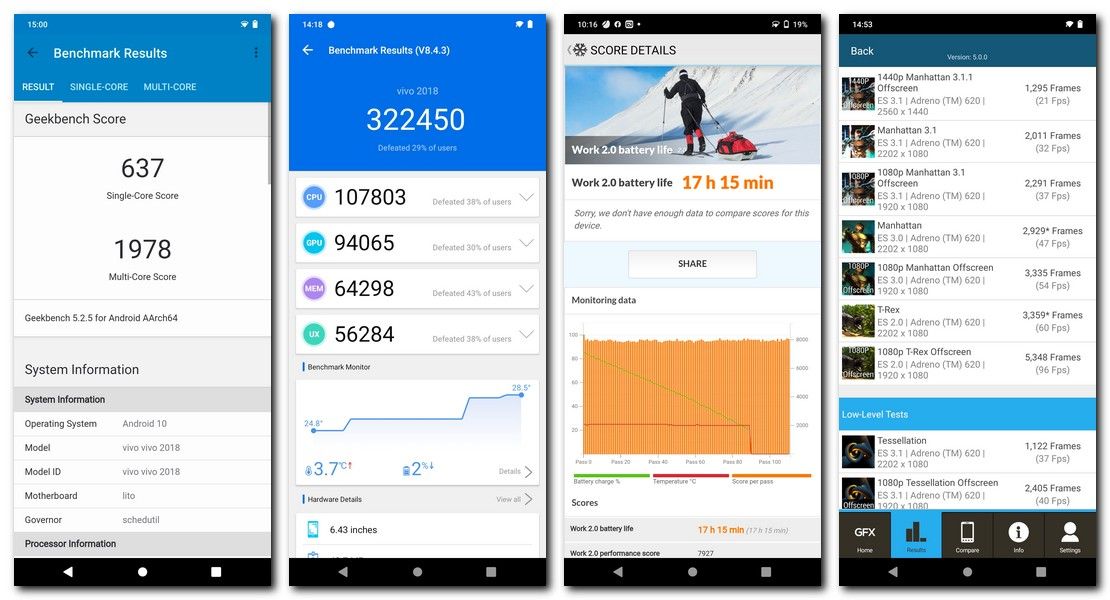
Other features on the phone include an in-display fingerprint sensor that offers snappy authentication. The face recognition is also extremely fast, although slightly less secure as it uses a 2D face model instead of 3D. The single firing speaker at the bottom happens to be just above average and is not really as loud as I would’ve liked it to be. As for connectivity, I tested the phone on Jio’s network in Noida and found the call and microphone quality up to the mark. The V20 Pro is 5G-capable, but I really wouldn’t factor that in while making a purchase, mainly due to the non-availability of 5G networks in the country. Apart from that the phone also supports, GSM, HSPA, and LTE.
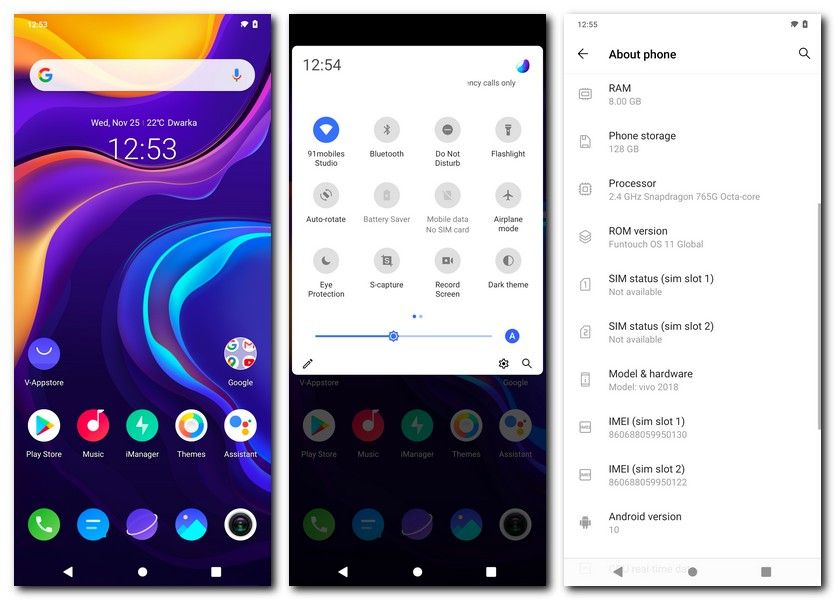
Software-wise, the Vivo V20 Pro runs Android 11-based FunTouch OS 11. I’m impressed with Vivo being amongst the first OEMs to ship its devices with Android 11 out-of-the-box. You can read my Vivo V20 review for a detailed understanding of the software implications on the V20 Pro. In summary: new navigation buttons, a simplified notifications tray, a more accessible settings menu, and overall reduced bloatware.
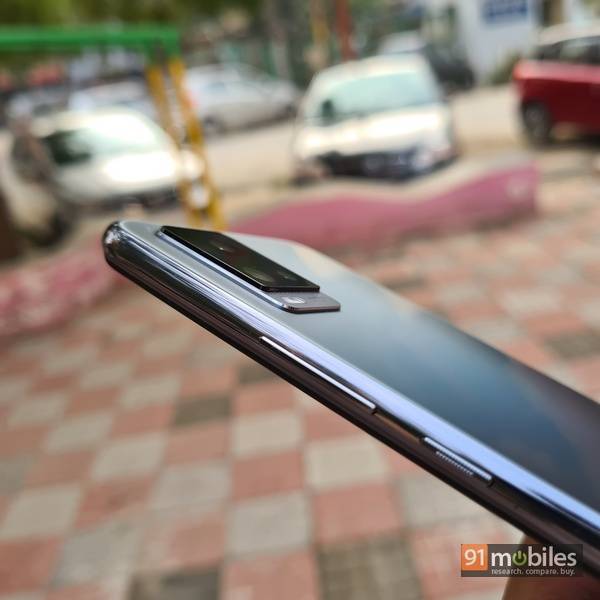
Battery
- Battery: 4,000mAh
- Charging speeds: 33W FlashCharge
- 0-50 percent: 25 minutes
I was slightly disappointed with the relatively lower capacity 4,000mAh battery on the V20 Pro. With handsets like the Galaxy M51 (review) packing in a ridiculous 7,000mAh battery for the same price I wondered how long would the V20 Pro actually last. The answer, as expected, is not too long, but thankfully there is the 33W FlashCharge technology that can juice up the V20 Pro quite quickly. In PCMark 10’s Battery, 2.0 test the phone lasted an impressive 17h 15min. Even so, the benchmark is not the most useful metric for gauging battery capacity. My standard test of looping a video on half brightness and half volume showed that the phone lasted just about 21 hours, which is in the average territory. Charging the phone fully takes about 1 hour, while 50 percent can be filled up in about 25 minutes. My normal usage of the phone makes it easily a one-day phone and ending at about 15 percent battery. Doing some graphically intensive tasks is going to drain the battery more profusely, likely to kill the phone before the day is done.
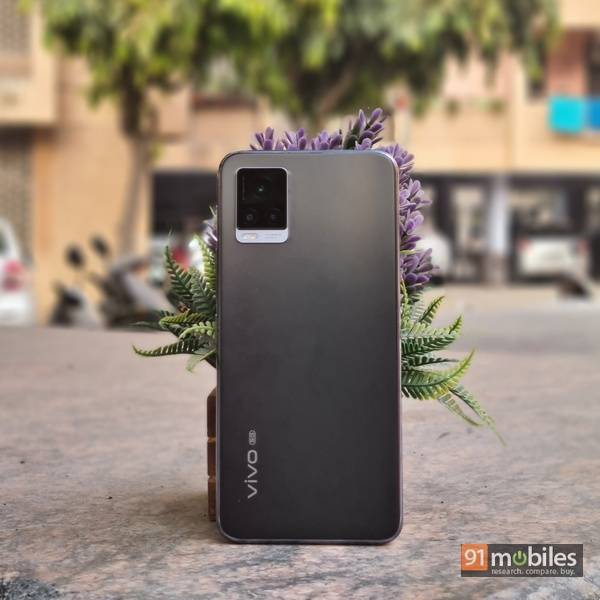
Final verdict
The Vivo V20 Pro is not the best phone in its segment and it’s not trying to be. With this device, Vivo has focused on a stellar camera experience and a great AMOLED panel albeit without a higher refresh rate. The phone is the slimmest, lightest, and, in my opinion, the best-looking device in its segment. It doesn’t pack in fancy internals like the Realme X3 SuperZoom or a massive battery like the Galaxy M51 or even the cleanest software like the OnePlus Nord. However, the phone can be described as a jack of all trades. For Rs 29,990 the V20 Pro will look good in your hand, offer a great viewing experience and get all your day-to-day tasks done in a jiffy, all the while clicking the best selfies. The OnePlus Nord’s 12GB + 256GB variant will also set you back Rs 29,999, so it is a choice of valuing a 90Hz screen and a cleaner software skin over better cameras and a fashionable design.
Editor’s rating: 4 / 5
Pros
- Super-sleek and lightweight
- Amazing set of cameras
- Runs Android 11
Cons
- Misses out on high screen refresh rate
- Average battery life
|
Rs. 29,990.00
|
Go To Store
|
|
 |
Rs. 28,790.00
|
Go To Store
|
 |
Rs. 29,990.00
|
Go To Store
|
 Vivo V20 Pro Vivo V20 Pro |
vs |  Realme X3 SuperZoom Edition Realme X3 SuperZoom Edition |
 Vivo V20 Pro Vivo V20 Pro |
vs |  OnePlus Nord OnePlus Nord |
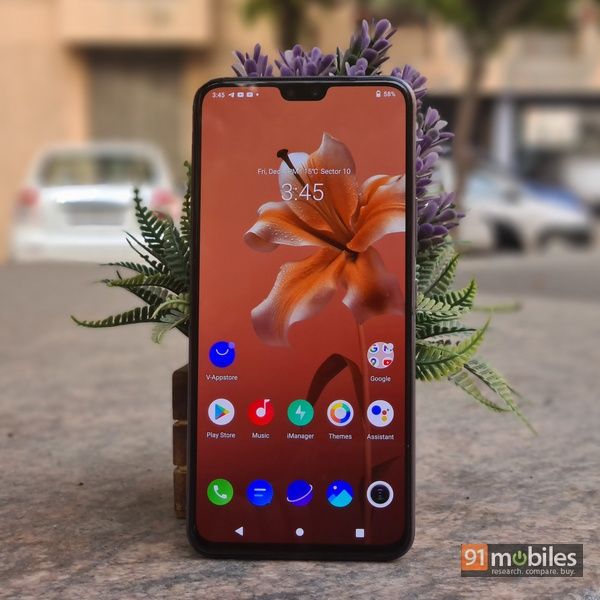
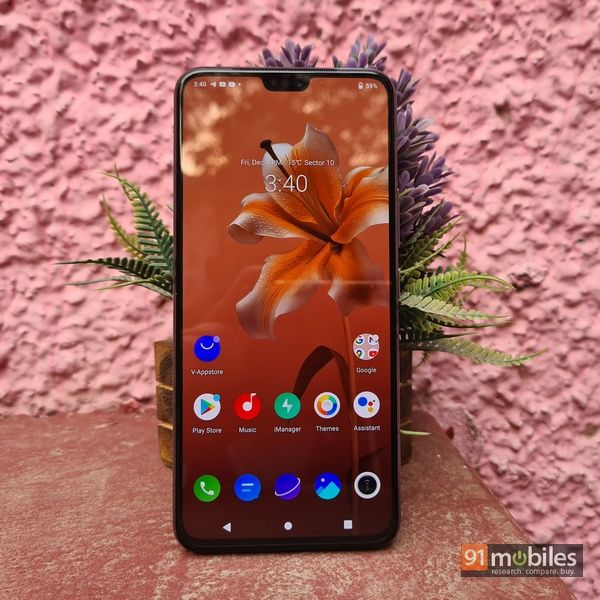




No comments